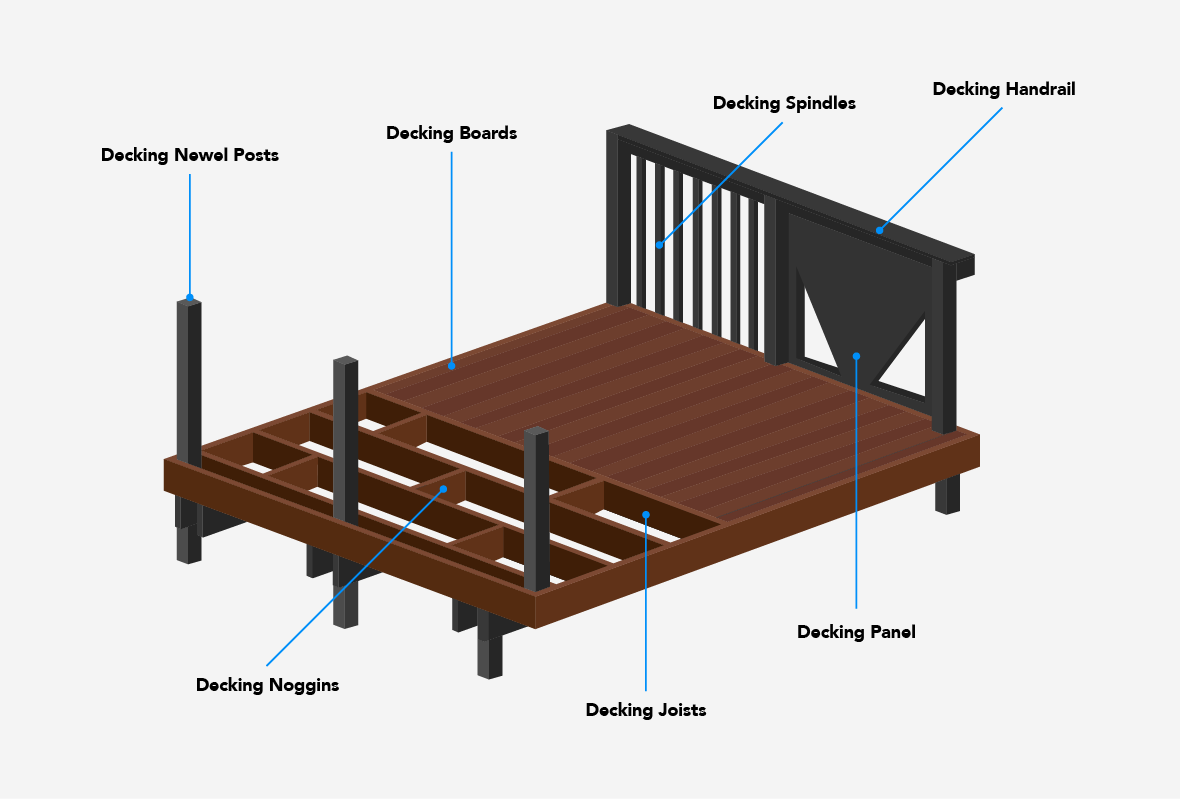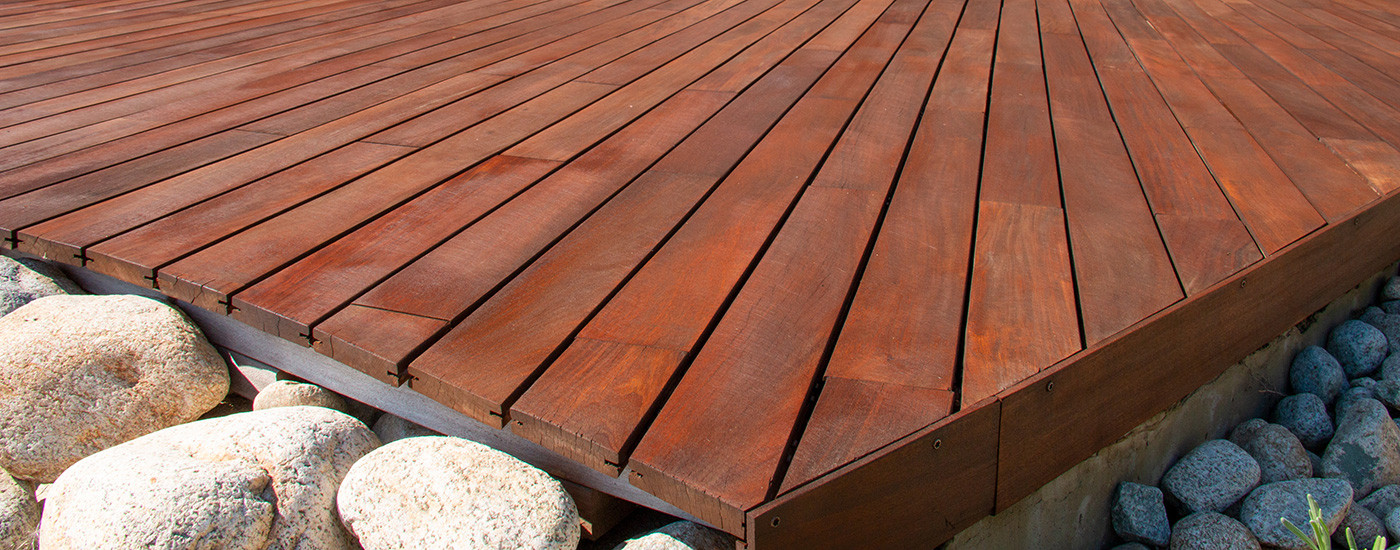Decking is that one garden feature that can instantly transform your outdoor space, linking it to your indoor space in an attractive and practical way. Easy to install yourself, decking consists of several parts that can cause confusion if you are unsure of what you need. This useful guide will help you identify the main parts of a timber deck.
Decking boards
Decking boards form the surface of a decked area and are positioned side by side to form a uniform and level area. Our timber decking boards are manufactured from pressure treated timber to reduce the risk from decay, rotting and insect infestation. The fronts are machined to form a grooved appearance, while the reverse of the boards is smooth planed with a rounded corner radius.
Decking joists
Decking that will endure must be constructed on a solid foundation. Timber decking joists are placed beneath the surface of the decking and are the beams that support the decking boards. Our decking joists are available in two sizes (2”x4” and 2”x6”) each of which is offered in a choice of three lengths. When ordering decking joists, ensure you have sufficient to use for the noggins. These are short pieces of timber that are fitted between joists for extra rigidity and are made by cutting standard joists to size.
Decking newel posts
The addition of a balustrade, or railing, around the perimeter of a decked area will transform it into a feature. Timber newel posts are the larger upright posts that are designed to be strong enough to support the handrail and prevent the balustrade from collapsing. They can be used with or without spindles. Our Modern Newel Post has a square profile with a decorative rebated groove and a pyramid top, while our Turned Newel Post has a turned finish with decorative ball on top.
Decking spindles
Decking spindles are also referred to as balusters and these are attached to the base rail on the decking surface and to the handrail. Regulations require spindles to be spaced 100mm apart. Our decking spindles are available in two styles; the Modern Spindle has a chamfer along each edge while the Turned Spindle has a classic colonial, turned appearance. Spindles fit into a groove in the handrail.
Decking handrail
A handrail forms the top of the decking railings and provides support and reinforcement for each spindle. Handrails are also used as the base rail which attaches to the surface of the decking and which the spindles are fixed to. Handrails are designed with a groove for the spindles to slot into and they should be attached to newel posts with angle brackets or screws.
Decking panels
As an alternative to spindles, you can use decking panels around your decked area. Available as a Sunshine Deck Panel, a Cross Top Deck Panel, or an Elite Cross Top Deck Panel, all are manufactured from pressure treated timber and can also be used as fence panels.

Before embarking on your decking project, contact our experienced sales staff today for all the help and advice you need about components and quantities. With over 40 years’ experience, we can help with all your decking enquiries.

